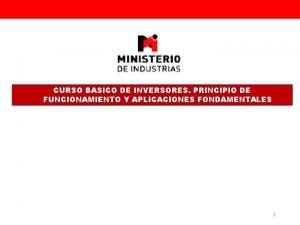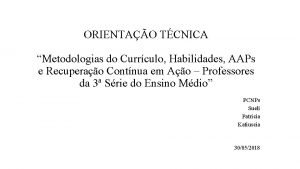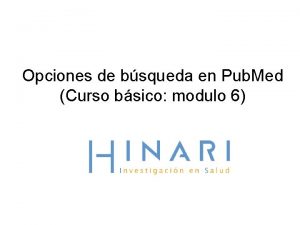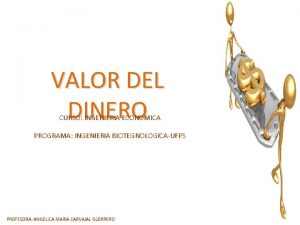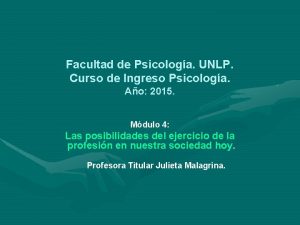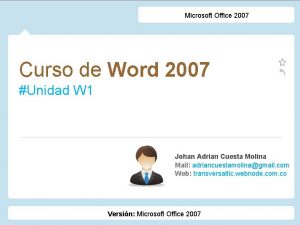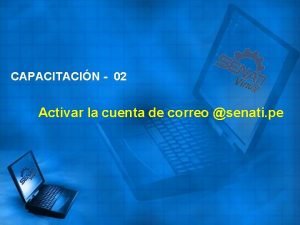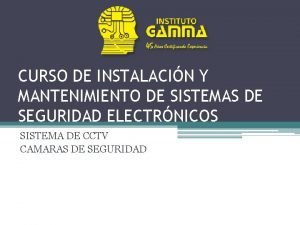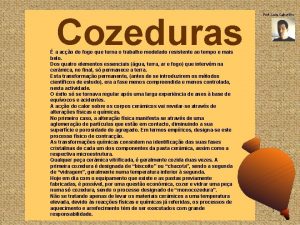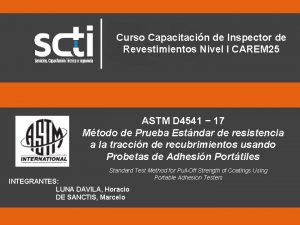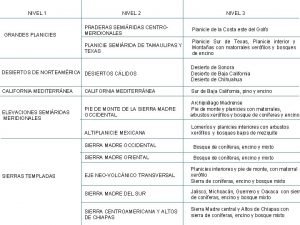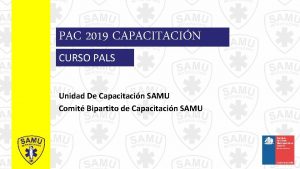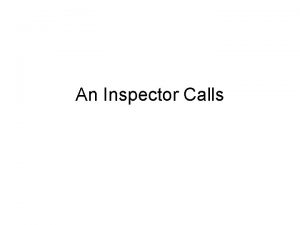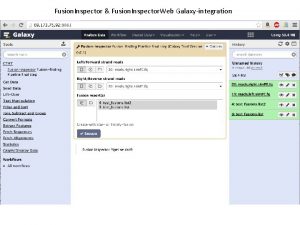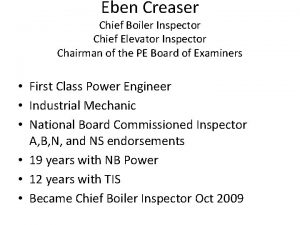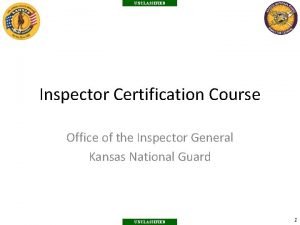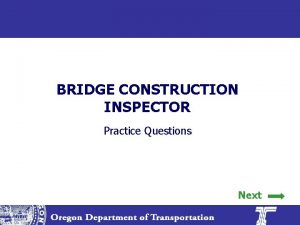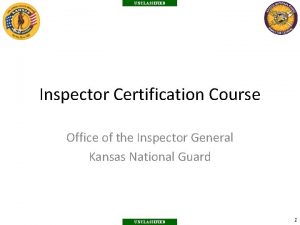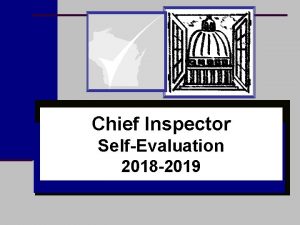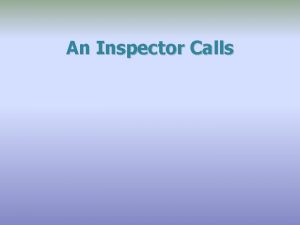Curso Capacitacin de Inspector de Revestimientos Nivel I
























- Slides: 24

Curso Capacitación de Inspector de Revestimientos Nivel I CAREM 25 ASTM D 4541 − 17 Método de Prueba Estándar de resistencia a la tracción de recubrimientos usando Probetas de Adhesión Portátiles Standard Test Method for Pull-Off Strength of Coatings Using Portable Adhesion Testers INTEGRANTES: LUNA DAVILA, Horacio DE SANCTIS, Marcelo

Curso Capacitación de Inspector de Revestimientos Nivel I CAREM 25 ASTM D 4541 − 17 Método de Prueba Estándar de resistencia a la tracción de recubrimientos usando Probetas de Adhesión Portátiles CONTENIDO 1. Scope 2. Referenced Documents 3. Summary of Test Method 4. Significance and Use 5. Apparatus 6. Test Preparation 7. Test Procedure 8. Calculation or Interpretation of Results 9. Report 10. Precision and Bias ANNEXES (Mandatory Information)

Curso Capacitación de Inspector de Revestimientos Nivel I CAREM 25 ASTM D 4541 − 17 Método de Prueba Estándar de resistencia a la tracción de recubrimientos usando Probetas de Adhesión Portátiles ALCANCE Procedure for evaluating adhesion of a coating system from metal substrates. Elaborate 2 test protocols: PROTOCOL 1 (FRACTURE) determines the greatest perpendicular force (in tension) that a surface area can bear before a plug of material is detached. PROTOCOL 2 (PASS / FAIL) determines if the coated surface remains intact at a defined load criteria. Fracture will occur along the weakest plane within the system comprised of the test fixture, glue, coating system and substrate.

Curso Capacitación de Inspector de Revestimientos Nivel I CAREM 25 ASTM D 4541 − 17 Método de Prueba Estándar de resistencia a la tracción de recubrimientos usando Probetas de Adhesión Portátiles ALCANCE ü Appropriate for other rigid substrates such as plastic and wood ü Standard developed for use on flat surfaces ü Results could have greater variability with lower values ü Method A: testing on concrete substrates (Test Method D 7234) ü Describes a class of apparatus: portable pull-off adhesion testers ü They are capable of applying a concentric load and counter load to a single surface. Only one side is accessible ü Measurements are limited by the cohesive strengths of the glue, coating layers and substrate ü This test can be destructive and spot repairs may be necessary

Curso Capacitación de Inspector de Revestimientos Nivel I CAREM 25 ASTM D 4541 D 5162 −− 17 15 Método - Práctica para la de ASTM de. Estándar Prueba de a. Discontinuidad del Recubrimiento resistencia la tracción de recubrimientos usando Protector Probetas No Conductor en Sustratos Metálicos. de Adhesión Portátiles DOCUMENTOS DE REFERENCIA • D 2651 Guide for Preparation of Metal Surfaces for Adhesive Bonding • D 3933 Guide for Preparation of Aluminum Surfaces for Structural Adhesives Bonding (Phosphoric Acid Anodizing) • D 7234 Test Method for Pull-Off Adhesion Strength of Coatings on Concrete Using Portable Pull-Off Adhesion Testers • E 691 Practice for Conducting an Interlaboratory Study to Determine the Precision of a Test Method

Curso Capacitación de Inspector de Revestimientos Nivel I CAREM 25 ASTM D 4541 D 5162 −− 17 15 Método - Práctica para la de ASTM de. Estándar Prueba de a. Discontinuidad del Recubrimiento resistencia la tracción de recubrimientos usando Protector Probetas No Conductor en Sustratos Metálicos. de Adhesión Portátiles RESUMEN DEL METODO DE PRUEBA Ø Performed by securing a loading fixture (dolly, stud) normal (perpendicular) to the surface of the coating with a glue. Ø After the glue is cured, a testing apparatus is attached to the loading fixture and aligned to apply tension normal to the test surface Ø The force applied to the loading fixture is then gradually and uniformly increased and monitored until either the loading fixture is detached, or a specified load value is reached and the test terminated Ø Test to fracture is used to determine a maximum load that can be achieved when a plug of material is detached. Ø Pass/fail is used to verify the results of a testing procedure can meet a minimum load criterion Ø The nature of the plane of fracture is qualified in accordance with the percent of adhesive and cohesive failures, interfaces and layers involved.

Curso Capacitación de Inspector de Revestimientos Nivel I CAREM 25 ASTM D 4541 D 5162 −− 17 15 Método - Práctica para la de ASTM de. Estándar Prueba de a. Discontinuidad del Recubrimiento resistencia la tracción de recubrimientos usando Protector Probetas No Conductor en Sustratos Metálicos. de Adhesión Portátiles SIGNIFICADO Y USO ü The pull-off strength of a coating is a performance property that may be referenced in specifications ü This test method serves as a means for uniformly preparing and testing coated surfaces, and evaluating and reporting the results. ü This test method is applicable to any portable apparatus meeting the requirements for determining the pull-off strength of a coating in this standard (see Annexes). ü The purchaser or specifier shall designate a specific test method procedure; B, C, D, E, or F and test Protocol; 1, or 2, when calling out this standard.

Curso Capacitación de Inspector de Revestimientos Nivel I CAREM 25 ASTM D 4541 D 5162 −− 17 15 Método - Práctica para la de ASTM de. Estándar Prueba de a. Discontinuidad del Recubrimiento resistencia la tracción de recubrimientos usando Protector Probetas No Conductor en Sustratos Metálicos. de Adhesión Portátiles APARATOS Adhesion Tester: commercially available, see Annex A 1/A 5 1 - Loading Fixtures: flat surface to be adhered to the coating and to the tester on the other end 2 - Detaching Assembly: central grip for engaging the fixture 3 - Base: detaching assembly or annular bearing for uniformly pressing against the coating 4 - Timer: limiting the loading rate 5 - Force Indicator/Calibration Information: determine the force delivered to the loading fixture Solvent: used for cleaning the surface. Finger prints, moisture, oxides, and dust Sandpaper: used to roughen the surfaces for glue application and coating adherence. Glue: used for securing the loading fixture to the coating. Clamps: magnetic, mechanical, tape or similar, if needed for holding the fixture Cotton Swabs: used for removing excess glue and defining the adhered area. Scoring Tool: circular hole cutter, or similar tool to score through to the substrate

Curso Capacitación de Inspector de Revestimientos Nivel I CAREM 25 ASTM D 4541 − 17 Método de Prueba Estándar de resistencia a la tracción de recubrimientos usando Probetas de Adhesión Portátiles

Curso Capacitación de Inspector de Revestimientos Nivel I CAREM 25 ASTM D 4541 D 5162 −− 17 15 Método - Práctica para la de ASTM de. Estándar Prueba de a. Discontinuidad del Recubrimiento resistencia la tracción de recubrimientos usando Protector Probetas No Conductor en Sustratos Metálicos. de Adhesión Portátiles PREPARACION DE LA PRUEBA REQUIREMENTS: The selected test area must be large enough to accommodate the number of replicate tests. The surface may have any orientation with reference to gravitational pull. Each loading fixture must be separated by at least the distance needed to accommodate the detaching apparatus. The selected test areas must also have enough perpendicular and radial clearance to accommodate the apparatus, be flat enough to permit alignment, and be rigid enough to support the counter force. Select representative test areas and clean the surfaces in a manner that will not affect integrity of the coating or leave a residue. If the surface is abraded, care must be taken to prevent significant loss of coating thickness. Clean the area to remove particulates after abrading. Use of a solvent to remove contaminants.

Curso Capacitación de Inspector de Revestimientos Nivel I CAREM 25 ASTM D 4541 D 5162 −− 17 15 Método - Práctica para la de ASTM de. Estándar Prueba de a. Discontinuidad del Recubrimiento resistencia la tracción de recubrimientos usando Protector Probetas No Conductor en Sustratos Metálicos. de Adhesión Portátiles PREPARACION DE LA PRUEBA Ø Prepare the glue in accordance with the glue manufacturer’s recommendations. Ø Apply the glue to the fixture or the surface to be tested, or both, using a method and thickness recommended by the glue manufacturer. Ø Be certain to apply the glue across the entire fixture surface. Ø Carefully remove any excess glue from around the fixture. (Warning—Movement, especially twisting, can cause tiny bubbles to coalesce) Ø During the glue set and early cure stage, a constant contact pressure should be maintained on the fixture. Magnetic or mechanical clamping systems work well, but systems relying on tack, such as masking tape Ø Note the approximate temperature, relative humidity, and other pertinent environmental conditions during the time of test.

Curso Capacitación de Inspector de Revestimientos Nivel I CAREM 25 ASTM D 4541 D 5162 −− 17 15 Método - Práctica para la de ASTM de. Estándar Prueba de a. Discontinuidad del Recubrimiento resistencia la tracción de recubrimientos usando Protector Probetas No Conductor en Sustratos Metálicos. de Adhesión Portátiles PROCEDIMIENTO DE PRUEBA Test Methods: A (discontinued). B — Fixed Alignment Adhesion Tester Type II C — Self-Alignment Adhesion Tester Type III D — Self-Alignment Adhesion Tester Type IV E — Self-Alignment Adhesion Tester Type V F — Self-Alignment Adhesion Tester Type VI Select an adhesion-tester with a detaching assembly and loading fixture size that has a force calibration spanning the range of expected values. The adhesion tester shall be calibrated at the lesser of the manufacturer’s recommended frequency or every three years. Follow the manufacturer’s recommendations !!!!

Curso Capacitación de Inspector de Revestimientos Nivel I CAREM 25 ASTM D 4541 D 5162 −− 17 15 Método - Práctica para la de ASTM de. Estándar Prueba de a. Discontinuidad del Recubrimiento resistencia la tracción de recubrimientos usando Protector Probetas No Conductor en Sustratos Metálicos. de Adhesión Portátiles PROCEDIMIENTO DE PRUEBA 1 - Align the device according to the manufacturer’s instructions and set the indicator to zero Proper alignment is critical. If alignment of the device is required, use the procedure recommended by the manufacturer of the adhesion tester and report the procedure used. 2 - Increase the load to the fixture in as smooth, consistent, and uniform manner as possible. The rate of pull shall be 1 MPa/s (150 psi/s) or less. The rate should be set so that the test is completed in less than 100 seconds. 3 - The test is completed when the fixture is detached from the substrate. Pass/fail test criteria is met or maximum pull strength for the instrument is reached. For pass/fail tests, the test may be terminated at any point after the test criterion has been reached. 4 - Record information required for the Report 5 - If a plug of material is detached, label and store the fixture for qualification of the failed surface 6 - Report any departures from the procedure such as possible misalignment, hesitations in the force application, etc.

Curso Capacitación de Inspector de Revestimientos Nivel I CAREM 25 ASTM D 4541 D 5162 −− 17 15 Método - Práctica para la de ASTM de. Estándar Prueba de a. Discontinuidad del Recubrimiento resistencia la tracción de recubrimientos usando Protector Probetas No Conductor en Sustratos Metálicos. de Adhesión Portátiles CALCULOS E INTERPRETACION DE RESULTADOS The relative load applied to each coating sample as follows: where: X = greatest mean pull-off load applied during a pass/fail test, or the pull-off load achieved at fracture. MPa (psi) F = actual load applied to the test surface d = equivalent diameter of the original surface area stressed having units of millimeters (inches) = diameter of the loading fixture

Curso Capacitación de Inspector de Revestimientos Nivel I CAREM 25 ASTM D 4541 − 17 Método de Prueba Estándar de resistencia a la tracción de recubrimientos usando Probetas de Adhesión Portátiles CALCULOS E INTERPRETACION DE RESULTADOS Describe the specimen as substrate A, upon which successive coating layers B, C, D, etc. , have been applied, including the glue, Y, that secures the fixture, Z, to the top coat Designate cohesive fractures by the layers within which they occur as B, C, D, Y, etc. , and the visually estimated percent of each. Designate adhesive fractures and glue failure by the interfaces at which they occur as A/B, B/C, C/D, Y/Z, etc. , and the visually estimated percent of each. If an irregular result can be attributed to an experimental cause, drop this result from the analysis. However, do not discard a result unless there are valid nonstatistical reasons for doing so or unless the result is a statistical outlier.

Curso Capacitación de Inspector de Revestimientos Nivel I CAREM 25 ASTM D 4541 D 5162 −− 17 15 Método - Práctica para la de ASTM de. Estándar Prueba de a. Discontinuidad del Recubrimiento resistencia la tracción de recubrimientos usando Protector Probetas No Conductor en Sustratos Metálicos. de Adhesión Portátiles CALCULOS E INTERPRETACION DE RESULTADOS Document any test where the load limit of the testing equipment is reached. Protocol 1 (Test to fracture) Disregard test results with visually estimated glue fracture greater than 1/4 of the loading area. Protocol 2 (Pass/fail test) The test can be terminated after the minimum criterion has been met. A test is passing when the maximum load applied is greater than or equal to the pass/fail criteria. If the maximum load is less than the pass/fail criteria, the test is either a failing test or an indeterminate test due to glue fracture. A test result is indeterminate when there is a visible amount of glue fracture (visibly detectable glue fracture is defined as glue failure of 5 % or more of the loading area) that occurred during the test and the maximum load is less than the pass/fail criteria. An indeterminate test may be redone to determine a passing or failing result. If the test is redone, and glue fracture persists at a load below the test criteria, review the test procedure and make adjustments to reduce glue fracture or indicate the test is indeterminate.

Curso Capacitación de Inspector de Revestimientos Nivel I CAREM 25 ASTM D 4541 D 5162 −− 17 15 Método - Práctica para la de ASTM de. Estándar Prueba de a. Discontinuidad del Recubrimiento resistencia la tracción de recubrimientos usando Protector Probetas No Conductor en Sustratos Metálicos. de Adhesión Portátiles PRECISION Y TENDENCIA Precision of this test method is based on an interlaboratory study of Test Method D 4541. Repeatability - Two test results obtained within one laboratory shall be judged not equivalent if they differ by more than the “r” value for that material; “r” is the interval representing the critical difference between two test results for the same material, obtained by the same operator using the same equipment on the same day in the same laboratory. Reproducibility - Two test results shall be judged not equivalent if they differ by more than the “R” value for that material; “R” is the interval representing the difference between two test results for the same material, obtained by different operators using different equipment in different laboratories. Bias - At the time of the study, there was no accepted reference material suitable for determining the bias for this test method, therefore no statement is being made. The precision statement was determined through statistical examination of 394 results, produced by analysts from seven laboratories, on four coatings, using five different instruments.

Curso Capacitación de Inspector de Revestimientos Nivel I CAREM 25 ASTM D 4541 − 17 Método de Prueba Estándar de resistencia a la tracción de recubrimientos usando Probetas de Adhesión Portátiles PRECISION Y TENDENCIA

Curso Capacitación de Inspector de Revestimientos Nivel I CAREM 25 ASTM D 4541 D 5162 −− 17 15 Método - Práctica para la de ASTM de. Estándar Prueba de a. Discontinuidad del Recubrimiento resistencia la tracción de recubrimientos usando Protector Probetas No Conductor en Sustratos Metálicos. de Adhesión Portátiles ANEXOS -TEST METHOD B FIXED-ALIGNMENT ADHESION TESTER TYPE II Apparatus: Aluminum loading fixtures + Conic base + Circular T-bolt head + Central grip + Tripod base hand wheel + Coaxial bolt + Dragging indicator with scale Procedure: 1 - Center the bearing on the coating surface 2 - Align the tripod base: the instrument will pull perpendicularly 3 - Firmly hold the instrument with one hand 4 - Apply the pulling force to a maximum or until the system fails 5 - Upon fracture, the dragging indicator retains the apparent load. The scale is in pounds per square inch (lb/sq 2) 6 - Record the highest value by reading the bottom

Curso Capacitación de Inspector de Revestimientos Nivel I CAREM 25 ASTM D 4541 D 5162 −− 17 15 Método - Práctica para la de ASTM de. Estándar Prueba de a. Discontinuidad del Recubrimiento resistencia la tracción de recubrimientos usando Protector Probetas No Conductor en Sustratos Metálicos. de Adhesión Portátiles ANEXOS -TEST METHOD C SELF-ALIGNING ADHESION TESTER TYPE III Apparatus: Loading fixture + Hydraulic piston and pin + Hose + Pressure gauge + Threaded plunger + Handle. The force is indicated by the maximum hydraulic pressure as displayed on the gauge. Standard working ranges: 0 to 10 MPa (0 to 1500 psi), 0 to 15 MPa (0 to 2250 psi) and 0 to 20 MPa (0 to 3000 psi). Procedure: 1 - Insert a decreased TFE-fluorocarbon plug into the loading fixture 2 - Remove plug after holding the loading fixture in place for 10 s. 3 - Connect a test loading fixture to the head 4 - Ensure the tester is held normal to the surface to be tested and that the hose is straight 5 - Increase the pressure slowly until the maximum load or fracture is reached.

Curso Capacitación de Inspector de Revestimientos Nivel I CAREM 25 ASTM D 4541 D 5162 −− 17 15 Método - Práctica para la de ASTM de. Estándar Prueba de a. Discontinuidad del Recubrimiento resistencia la tracción de recubrimientos usando Protector Probetas No Conductor en Sustratos Metálicos. de Adhesión Portátiles ANEXOS -TEST METHOD D SELF-ALIGNMENT ADHESION TESTER TYPE IV Apparatus: Loading fixture + Detaching assembly or piston + Control module + Pressurized air source. Procedure: 1 - Adhere the loading fixture to the coating 2 - Place the piston over the loading fixture 3 - Attach the appropriate pneumatic hoses and ensure Zero the Piston Pressure gauge/display. 4 - Press and hold the Run button and monitor the Piston Pressure gauge/display to obtain a rate of pressure increase of less than 1 MPa (100 psi/s). Entire test will be complete within 100 s. 5 - Record both the maximum pressure attained and the specific piston used. Convert the maximum Piston Pressure to the load applied to the coating using the conversion charts or set the specific testing parameters within the software to have this step completed automatically.

Curso Capacitación de Inspector de Revestimientos Nivel I CAREM 25 ASTM D 4541 D 5162 −− 17 15 Método - Práctica para la de ASTM de. Estándar Prueba de a. Discontinuidad del Recubrimiento resistencia la tracción de recubrimientos usando Protector Probetas No Conductor en Sustratos Metálicos. de Adhesión Portátiles ANEXOS -TEST METHOD E SELF-ALIGNING ADHESION TESTER TYPE V Apparatus: Spherical loading fixture + hydraulic actuator + pressure gauge with LCD display + hydraulic pump. Procedure: 1 - Ensure the pressure relief valve on the pump is completely open 2 - Place the actuator assembly over the loading fixture head. Select the appropriate loading fixture size on the display and then press the zero button. 3 - Prime the pump by pumping the handle 4 - Complete a single stroke at a uniform rate of no more than 1 MPa/s (150 psi/s) until the actuator pulls the loading fixture from the surface. 5 - The display will maintain the maximum pressure reading. Record this pull off pressure into the tester’s memory

Curso Capacitación de Inspector de Revestimientos Nivel I CAREM 25 ASTM D 4541 D 5162 −− 17 15 Método - Práctica para la de ASTM de. Estándar Prueba de a. Discontinuidad del Recubrimiento resistencia la tracción de recubrimientos usando Protector Probetas No Conductor en Sustratos Metálicos. de Adhesión Portátiles ANEXOS -TEST METHOD F SELF-ALIGNING ADHESION TESTER TYPE VI Apparatus: Head with four independently feet + loading fixture + Crank handle pull mechanism + hydraulic cable mechanism+Pressure gauge Procedure: 1 - Attach the self-aligning test head to the hydraulic cable mechanism 2 - Return the crank handle to the start position and ensure that the four pistons of the self-aligning head are level by pushing the head against a flat surface. 3 - Place the relevant support ring over the loading fixture 4 - Attach the test head to the loading fixture 5 - Hold the pull mechanism in one hand operate the crank with the other using a smooth and regular motion to ensure that the force is applied evenly until the desired value is reached or the fracture occurs.

Curso Capacitación de Inspector de Revestimientos Nivel I CAREM 25 ASTM D 4541 − 17 Método de Prueba Estándar de resistencia a la tracción de recubrimientos usando Probetas de Adhesión Portátiles CONCLUSIÓN ASTM D 4541 -17: ü Presenta un método de prueba para la medición de adherencia en sustratos metálicos o superficies rígidas. ü Permite establecer una referencia utilizable en especificaciones técnicas y en el proceso de inspección y control de revestimientos. ü Muestra 5 tipos diferentes de aparatos portátiles comúnmente utilizados, siendo un procedimiento sencillo y de aplicación similar.
 Capacitacin
Capacitacin Revestimientos aislantes
Revestimientos aislantes Senac recomenda
Senac recomenda Dr alejandro guerrero
Dr alejandro guerrero Curso de inversores
Curso de inversores Curso antibioterapia
Curso antibioterapia Curso desarrollo socioafectivo
Curso desarrollo socioafectivo Curso pac duoc
Curso pac duoc Curso de profeta
Curso de profeta Modelo de avaliação de curso
Modelo de avaliação de curso Curso intensivo de teologia do ministério ide
Curso intensivo de teologia do ministério ide Aap 2018 um professor ministra um curso especial
Aap 2018 um professor ministra um curso especial Resumos medcurso
Resumos medcurso Curso derecho propiedad intelectual
Curso derecho propiedad intelectual Curso de ingenieria economica
Curso de ingenieria economica Curso de ingreso psicología unlp
Curso de ingreso psicología unlp Curso word 2007
Curso word 2007 Viaje a paris fin de curso
Viaje a paris fin de curso Curso de microsoft myanalytics
Curso de microsoft myanalytics Www.outlook.coom/senati.pe
Www.outlook.coom/senati.pe Curso github
Curso github Que tica
Que tica Curso de instalación de cámaras de seguridad a distancia
Curso de instalación de cámaras de seguridad a distancia Curso de edi
Curso de edi Curso cerâmica e cozedura a lenha
Curso cerâmica e cozedura a lenha




